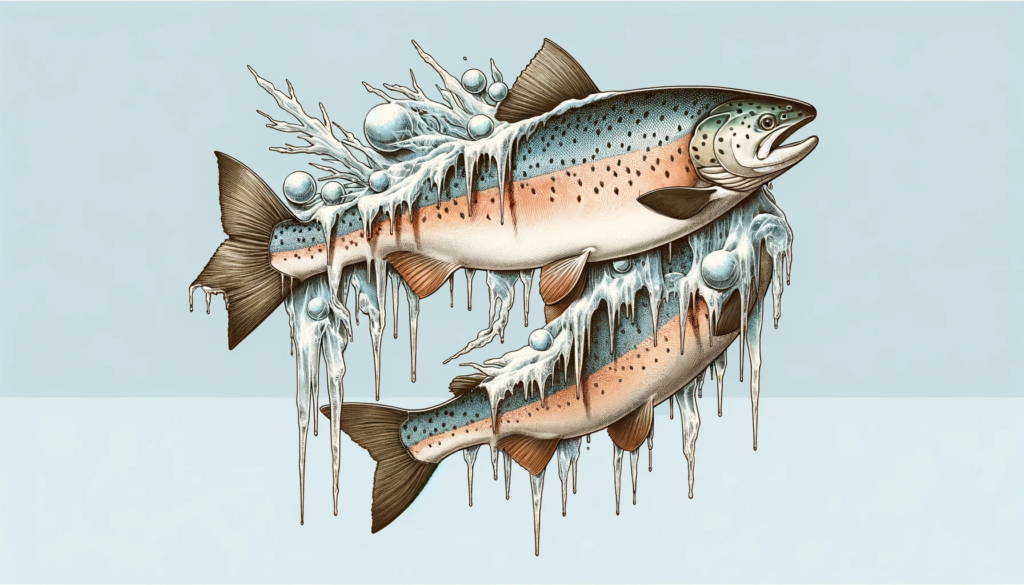Defrosting frozen salmon **and keeping it tasty** is **easy** with the right methods. Avoid thawing at room temperature; it’s not safe. Look at this chart to see **top ways to thaw salmon** based on your time. Whatever you do, don’t eat it straight from the freezer!
| Method | Thawing Duration | Best For |
|---|---|---|
| Refrigerator | Around 8 to 12 hours | Planning ahead 1 day. |
| Cold Water | About 1 to 2 hours | Preparing ahead a few hours. |
| Microwave | Approximately 3 to 5 minutes | Defrosting if low on time. |
How to Defrost Salmon
In The Fridge
- Plan ahead & begin the thawing process approximately 1 day before you intend to cook it.
- Place in the refrigerator.
- Let salmon sit for around 8 to 12 hours (varies by the size of the filet or piece).
- Check to make sure your salmon has fully thawed by pressing on the package. If it still feels firm, leave it a few more hours.
The refrigerator method isn’t fast enough if you want to eat your salmon within the next few hours. Instead, you will need to use cold water or a microwave to defrost quicker.
In Cold Water
- Fill a bowl with enough cold water to fully submerge the salmon.
- If the frozen salmon package floats, place a heavy plate on top to keep it submerged.
- Place the cold water bowl in the fridge.
- Check on the salmon after roughly 30 minutes by pressing on the package. If it’s still firm, continue thawing for an additional 15 to 30 minutes. Salmon defrosts at rate of approximately 1 to 2 hours per pound in cold water.
- After salmon is thawed, cook it right away.
Cook all of the defrosted salmon immediately. It is generally not safe to refreeze salmon that was thawed using cold water or microwave methods. At the end of the process, the internal temperature will be within the safe eating zone.
In The Microwave
- Remove any plastic wrapping and place the frozen salmon on a microwave-safe dish.
- Cover it with a microwaveable paper towel to absorb any moisture and prevent a dirty microwave.
- Use the ‘Defrost’ button and set the timer for 3 to 5 minutes (for a half pound of salmon).
- Check on the salmon in 1-minute increments because each microwave uses different power settings for its ‘Defrost’ feature.
- After the microwave thaws your salmon, prepare immediately.
Microwaves are the quickest way to defrost salmon. Pay diligent attention to prevent accidentally cooking the delicate fish.
Improper application of microwave ‘Defrost’ settings may lead to unevenly thawed or partially cooked salmon, hindering its quality.
How Long Can You Freeze Salmon For?
You can freeze salmon for up to 6 months safely. Don’t refreeze salmon that has already been thawed in a microwave or cold water. Learning how to freeze salmon correctly helps prevent foodborne illnesses after thawing. Although freezing extends shelf life, eating it within six months ensures better taste and texture.
Long-term freezing can negatively impact the tender texture and rich flavor of salmon, so enjoy sooner rather than later.
Can You Prepare Frozen Salmon Without Thawing It?
Yes, with limitations. Direct cooking methods can be used cautiously.
Cooking frozen salmon without thawing is possible, especially when baking or broiling. Ensure the internal temperature reaches safety standards.
| Method | Remarks |
|---|---|
| Baking | Can be baked from frozen; extend cooking time. |
| Broiling | Start under foil to thaw, then broil to finish. |
| Poaching | Submerge in liquid; frozen state extends cooking time. |
It is safe to cook frozen salmon for certain methods like baking or poaching, although taste and texture might not match fresh or thawed salmon.

